Network as a Service (NaaS) PlayBook – Wizard: Mobile Core Architecture
Mobile Core Architecture Wizard
The Mobile Core Architecture Wizard's objective is to ease the NaaS Operators the first draft of the overall architecture as well as the most important services and strategies.
It contains:
- Architecture Description: Summary of the EPC elements and type of deployment according to existing infrastructure.
- High Availability Recommendation: Recommended redundancy mechanisms for hardware and software
- NFV Description: NFV Components, Virtualization Technology and main VNFs to be deployed.
Basics for this wizard are addressed on the Mobile Core Architecture Module.
EPC minimum deployment

Introducing new EPC nodes and interworking with legacy PS by Gn/Gp Interfaces
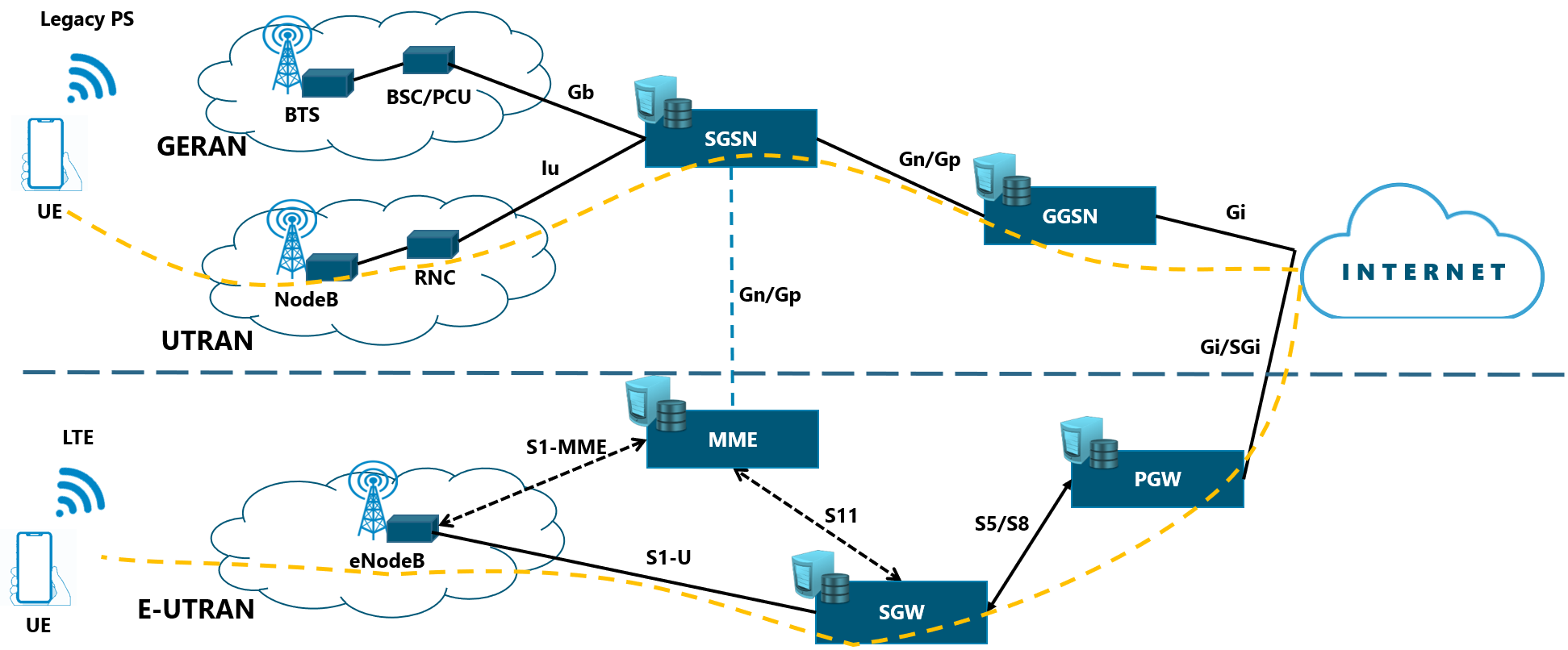
Introducing new EPC nodes and interworking with legacy PS by S3/S4 interfaces
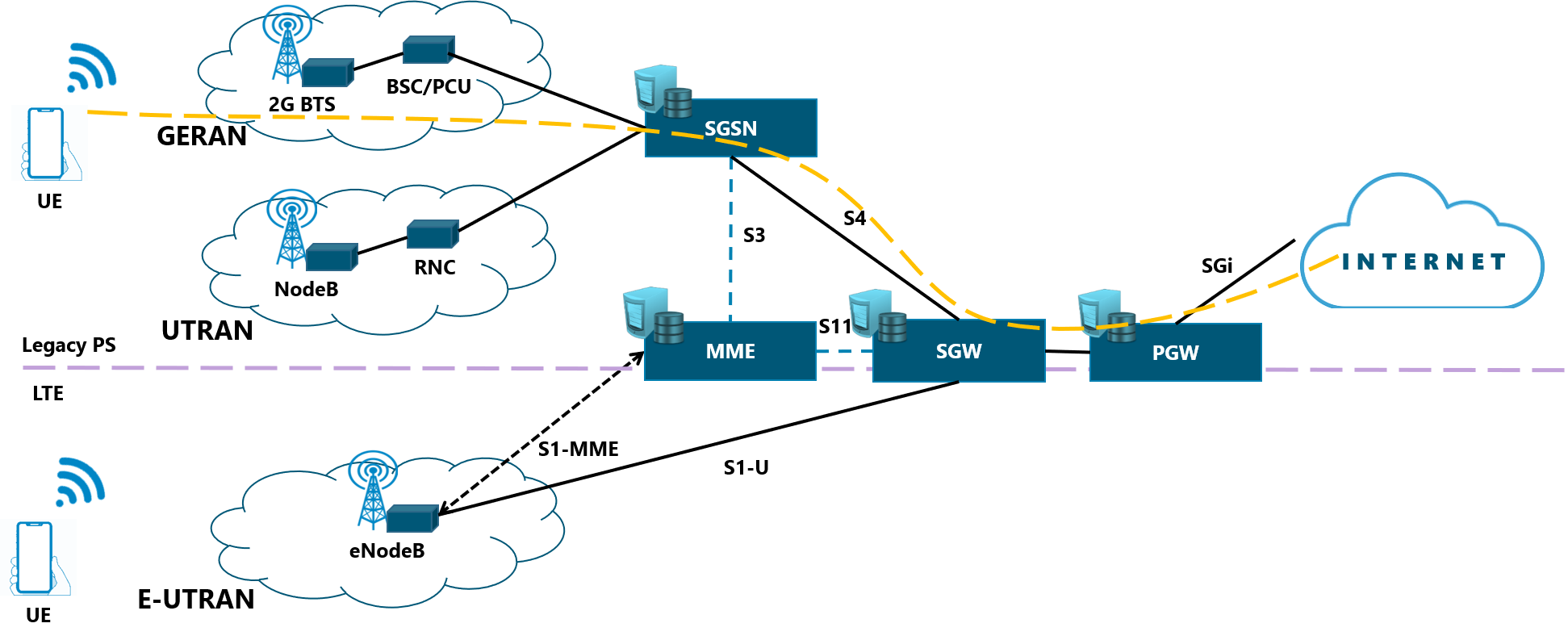
Upgrading the existing PS core to support 2G/3G/LTE
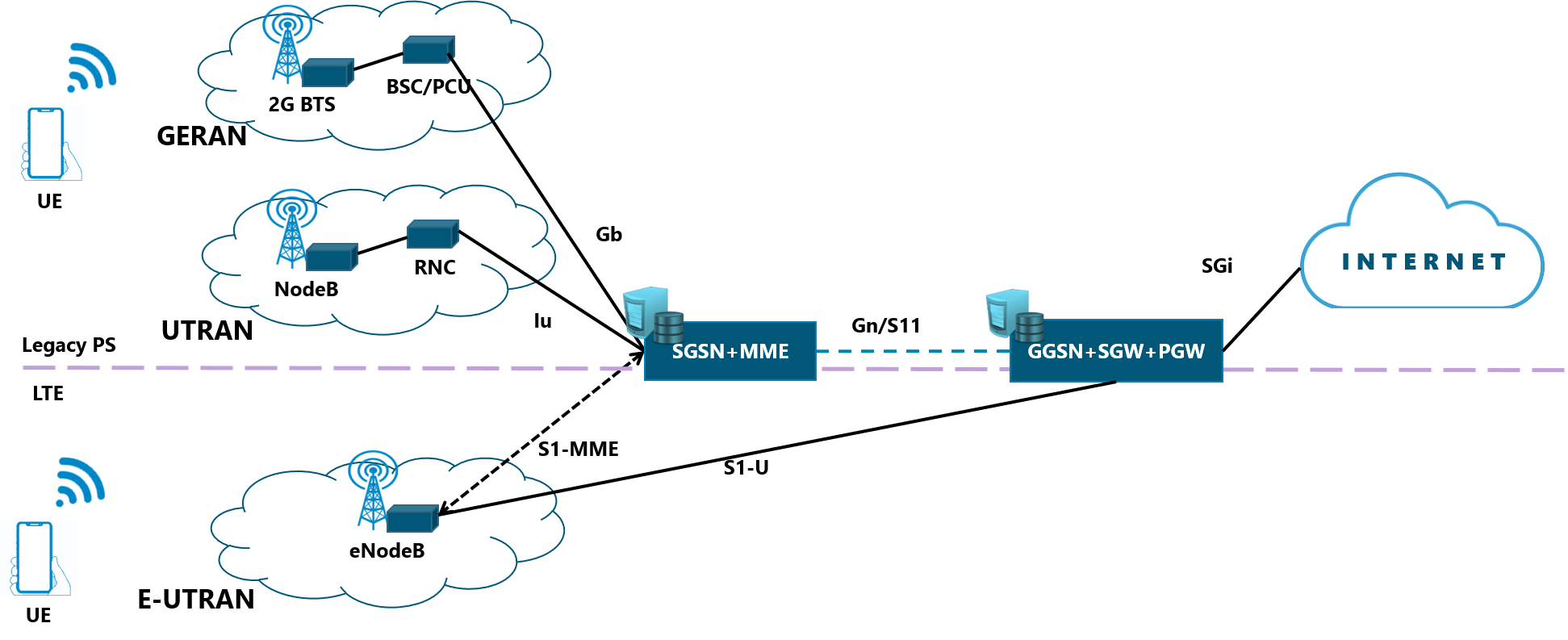
New EPC deployment independent of the current 3G core
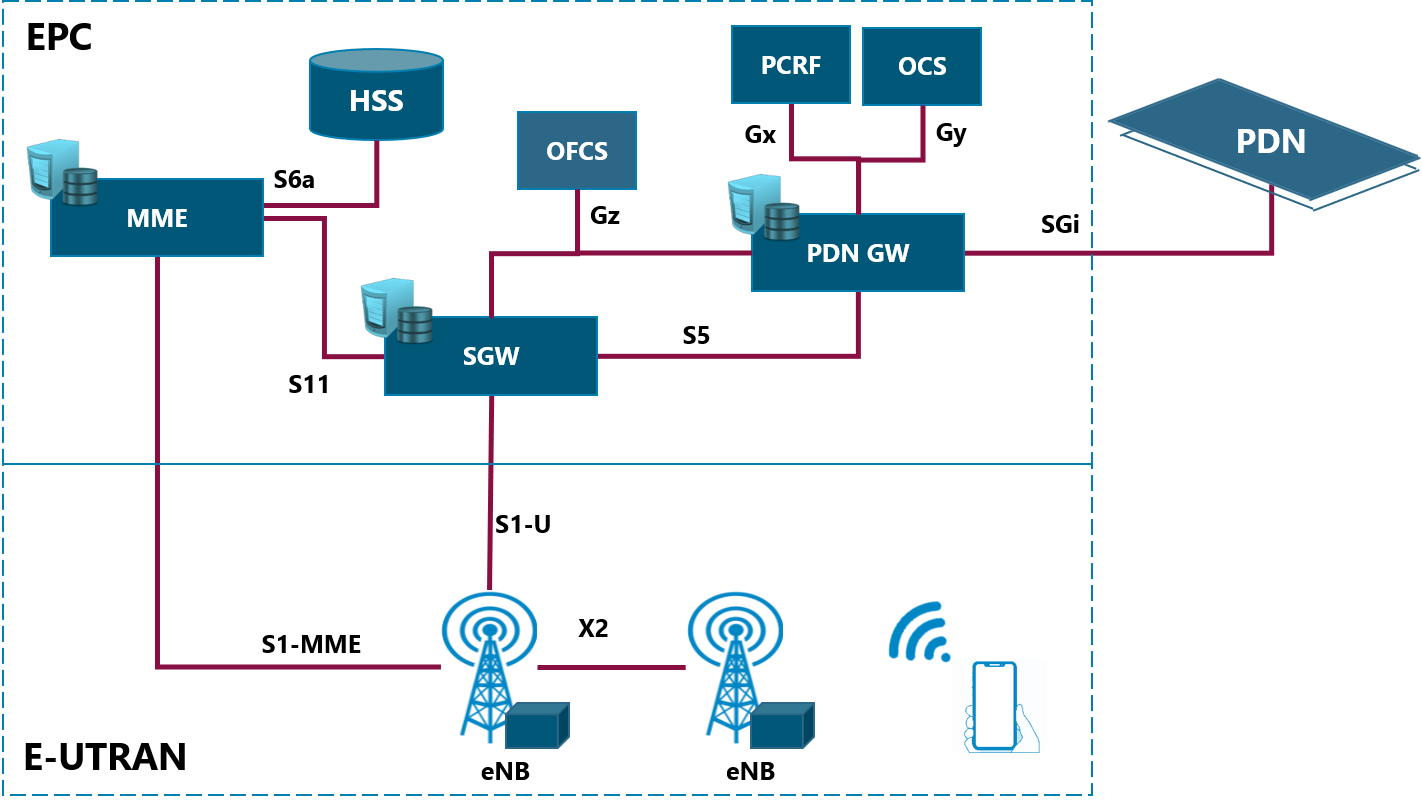
New EPC deployment

3G Access via Gn/Gp interfaces

3G Access via SGSN EPC-enabled

Architecture Description
- EPC elements to be deployed:
- MME
- SGW
- This architecture will enable the NaaS operator to control the mobility and sessions within the E-UTRAN.
- Minimize inversion but get full control of the RAN to serve MNOs and the full-MVNO market
- Using a home-routed roaming strategy, NaaS operator can rent its access network to those customers who want to expand its geographical coverage.
Architecture Description
- EPC elements to be deployed:
- MME
- SGW
- PGW
- HSS
- PCC elements to be deployed:
- PCRF
- PCEF (contained on PGW)
- SPR (contained on HSS)
- This deployment will enable the NaaS operator to support provisioning, monitoring, control and charging of IP data services.
- Provide services to MNOs and all the types of MVNOs.
- In this solution there is no impact on legacy or roaming networks, since no additional changes are needed on the network elements.
- NaaS operator can use a home-routed or local-breakout roaming strategy as it best suits its customers, in order to rent its access network to those customers that want to expand its geographical coverage.
Architecture Description
- EPC elements to be deployed:
- MME
- SGW
- PGW
- HSS
- PCC elements to be deployed:
- PCRF
- PCEF (contained on PGW)
- SPR (contained on HSS)
- This deployment will enable the NaaS operator to support provisioning, monitoring, control and charging of IP data services.
- Provide services to MNOs and all the types of MVNOs.
- When deploying this architecture the NaaS operator will get all the benefits of the S3/S4 LTE-enhanced interfaces by the use of GTPv2 protocol, which among its optimization for LTE it includes reduction of excessive signaling (idle mode signaling reduction) or dual stack bearer support. However, this will be reflected in a bigger inversion.
- NaaS operator can use a home-routed or local-breakout roaming strategy as it best suits its customers, in order to rent its access network to those customers that want to expand its geographical coverage.
Architecture Description
- EPC elements to be deployed:
- MME
- SGW
- PGW
- HSS
- PCC elements to be deployed:
- PCRF
- PCEF (contained on PGW)
- SPR (contained on HSS)
- This deployment will enable the NaaS operator to support provisioning, monitoring, control and charging of IP data services.
- Provide services to MNOs and all the types of MVNOs.
- The SGSN will be upgraded to support the functionality of the SGSN and MME and the GGSN will be upgraded to support the functionality of the GGSN/SGW/PGW . This is a major HW/SW upgrade and may lead to serious impact on existing customers and will lead to full outage to the PS network.
- NaaS operator can use a home-routed or local-breakout roaming strategy as it best suits its customers, in order to rent its access network to those customers that want to expand its geographical coverage.
Architecture Description
- EPC elements to be deployed:
- MME
- SGW
- PGW
- HSS
- PCC elements to be deployed:
- PCRF
- PCEF (contained on PGW)
- SPR (contained on HSS)
- This deployment will enable the NaaS operator to support provisioning, monitoring, control and charging of IP data services. It is not recommended to deploy independent LTE and 3G cores, it will complicate operations, and results in a bigger inversion compared to an unified LTE-3G core.
- Provide services to MNOs and all the types of MVNOs.
- NaaS operator can use a home-routed or local-breakout roaming strategy as it best suits its customers, in order to rent its access network to those customers that want to expand its geographical coverage.
Architecture Description
- EPC elements to be deployed:
- MME
- SGW
- PGW
- HSS
- PCC elements to be deployed:
- PCRF
- PCEF (contained on PGW)
- SPR (contained on HSS)
- This deployment will enable the NaaS operator to support provisioning, monitoring, control and charging of IP data services.
- Provide services to MNOs and all the types of MVNOs.
- NaaS operator can use a home-routed or local-breakout roaming strategy as it best suits its customers, in order to rent its access network to those customers that want to expand its geographical coverage.
Architecture Description
- EPC elements to be deployed:
- MME
- SGW
- PGW
- HSS
- PCC elements to be deployed:
- PCRF
- PCEF (contained on PGW)
- SPR (contained on HSS)
- This deployment will enable the NaaS operator to support provisioning, monitoring, control and charging of IP data services.
- Provide services to MNOs and all the types of MVNOs.
- In this solution there is no impact on legacy or roaming networks, since no additional changes are needed on the network elements.
- NaaS operator can use a home-routed or local-breakout roaming strategy as it best suits its customers, in order to rent its access network to those customers that want to expand its geographical coverage.
Architecture Description
- EPC elements to be deployed:
- MME
- SGW
- PGW
- HSS
- PCC elements to be deployed:
- PCRF
- PCEF (contained on PGW)
- SPR (contained on HSS)
- This deployment will enable the NaaS operator to support provisioning, monitoring, control and charging of IP data services.
- Provide services to MNOs and all the types of MVNOs.
- When deploying this architecture the NaaS operator will get all the benefits of the S3/S4 LTE-enhanced interfaces by the use of GTPv2 protocol, which among its optimization for LTE it includes reduction of excessive signaling (idle mode signaling reduction) or dual stack bearer support. However, this will be reflected in a bigger inversion.
- NaaS operator can use a home-routed or local-breakout roaming strategy as it best suits its customers, in order to rent its access network to those customers that want to expand its geographical coverage.
High Availability Recommendation
- Hardware:
- Server:
- Hot swap devices
- Hot plug PCIe
- N+1 Redundancy Mechanism under active/standby mode (Minimum)
- Storage:
- Hot swap devices
- RAID or replication mechanisms
- Netwoking:
- Bonding
- N+1 Redundancy Mechanism under active/standby mode (Minimum)
- Application:
- N+1 Redundancy, Active/Active schema
High Availability Recommendation
- Hardware:
- Server:
- Hot swap devices
- Hot plug PCIe
- N+1 Redundancy Mechanism under active/standby mode (Minimum)
- Storage:
- Hot swap devices
- RAID or replication mechanisms
- Netwoking:
- Bonding
- N+1 Redundancy Mechanism under active/standby mode (Minimum)
- Application:
- N+1 Redundancy, Active/Active schema
High Availability Recommendation
Network Segments Options

NFV architecture
- Elements to be deployed:
- NFVI (Hardware + Virtualization Layer)
- MANO (VIM, VNFM & NFVO)
- VNFs
NFV architecture
- Elements to be deployed:
- NFVI (Hardware + Virtualization Layer)
- MANO (VIM, VNFM & NFVO)
- VNFs
NFV architecture
Network Segments Options
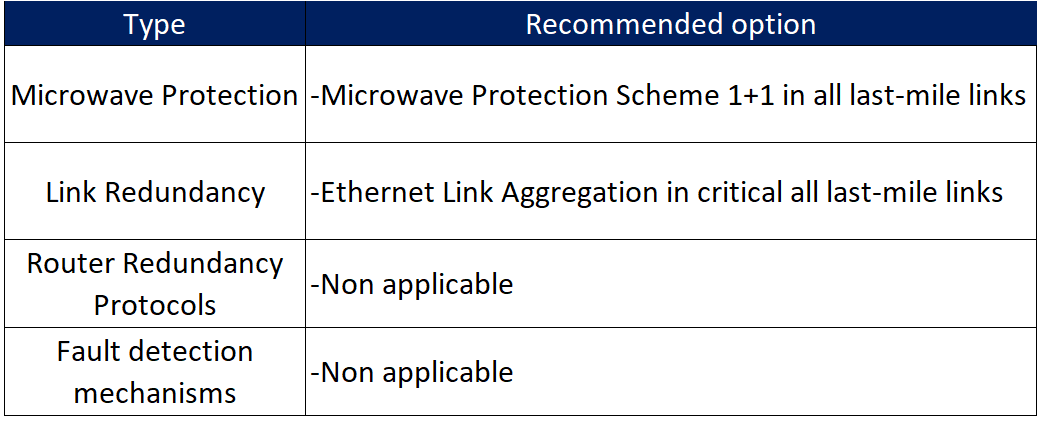
Virtualization Technology: Hypervisor-based
- VNFs types to be deployed:
- Control plane VNF: MME, SGW-C
- Data plane VNF: SGW-U
Virtualization Technology: Hypervisor-based
- VNFs types to be deployed:
- Control plane VNF: MME, SGW-C, PGW-C, PCRF, PCEF (contained on PGW)
- Data plane VNF: SGW-U, PGW-U
- Data base VNF: HSS, Billing Node
